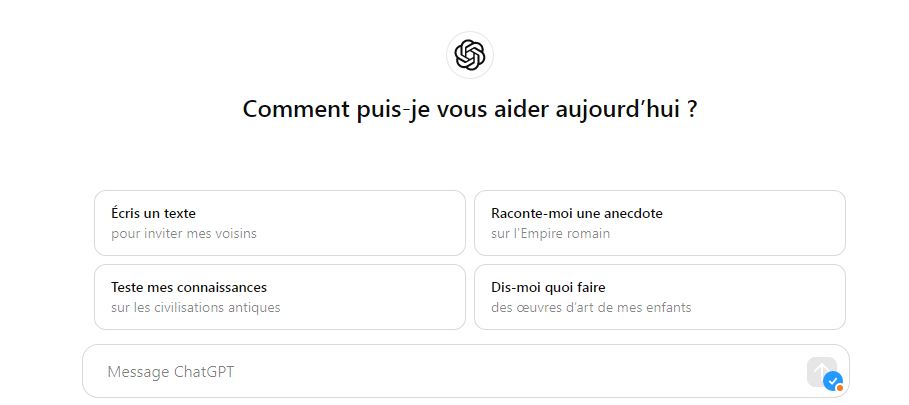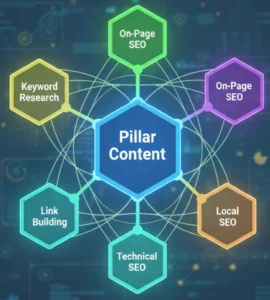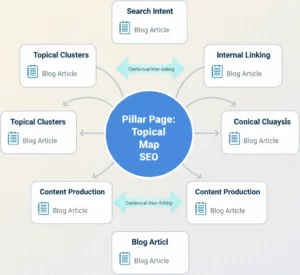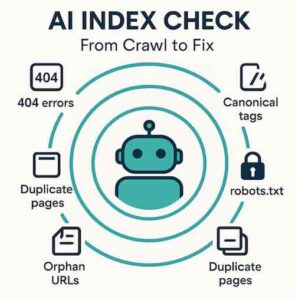
In this article, we will explore how to avoid plagiarism with an AI Writer, a technology that has become crucial for generating content. Understanding the importance of originality in AI-assisted writing can help you produce authentic content while maintaining the credibility of your work.
Table of Contents
ToggleContext and Challenges around the Use of AI Writers
Context and Challenges
With the advancement of technology, AI Writers like ChatGPT have become popular for quickly generating content. However, the use of these tools can sometimes lead to plagiarism issues. Companies and content creators need to understand how these tools work to avoid falling into the trap of plagiarism.
AI Writers can generate contextually relevant text, but this does not guarantee uniqueness. It’s crucial to assess each piece of content to ensure its originality.
Presenting Challenges of Plagiarism in AI-generated Content
Plagiarism in AI-generated content poses ethical and practical challenges. AI algorithms, such as those used by ChatGPT, utilize vast databases to generate responses, increasing the risk of producing content that closely resembles previously published documents.
What is Plagiarism and Why is it a Problem?
Definition of Plagiarism
Plagiarism is the act of taking someone else’s ideas, words, or works without proper credit. It involves copying someone else’s work, either fully or partially, and presenting it as your own.
This can occur in various contexts, including academic, artistic, literary, or professional fields.
This issue is amplified with AI Writers because it can be difficult to identify the exact origin of generated content.
Plagiarism can take different forms, such as exact reproduction of text without citation, paraphrasing without indicating the source, or using original ideas without mentioning the author.
Plagiarism is considered a violation of intellectual ethics and can lead to serious consequences, including academic penalties, legal actions, and loss of credibility. Therefore, it is essential to always cite sources correctly and respect the work of others to avoid any suspicion of plagiarism.

Types of Plagiarism and Their Impacts
There are several types of plagiarism: direct plagiarism, paraphrasing plagiarism, and mosaic plagiarism.
Direct Plagiarism
Direct plagiarism is an academic dishonesty where one copies someone else’s text, idea, or work without citing the original source. This practice is severely condemned in academic and professional environments because it violates the original author’s intellectual property rights and undermines the integrity of the person committing plagiarism.
Direct plagiarism is considered a violation of academic ethics as it demonstrates a lack of rigor and respect for others’ work. By appropriating the ideas and words of another without permission, the plagiarist compromises their own credibility and reputation, being perceived as dishonest and unreliable.
Therefore, it is essential for every student or professional to adhere to citation rules and proper referencing of sources to avoid any suspicion of direct plagiarism. By correctly citing the work of others and using quotation marks for direct quotes, one demonstrates diligence and intellectual honesty while ensuring recognition of the original authors’ work.
Paraphrasing Plagiarism
Paraphrasing plagiarism is an unethical practice where one takes ideas or content from an original text and rephrases them slightly to make it appear as if it is an original creation. This plagiarism technique is often used to circumvent citation and referencing rules, making it seem like the author has genuinely worked on the text.
However, it is important to note that paraphrasing plagiarism is equally condemnable as direct plagiarism. Even if the words are changed, the idea remains the same, and it still constitutes an undue appropriation of someone else’s work.
To avoid paraphrasing plagiarism, it is essential to always cite sources properly and ensure that all borrowed information is correctly referenced. It is also recommended to develop one’s own ideas and transparently and honestly rely on external sources.
Mosaic Plagiarism
Mosaic plagiarism is a form of plagiarism where fragments of text from different sources are gathered, pieced together, and presented as an original creation. This deceptive practice may seem harmless but violates the copyrights and intellectual property of the original authors.
Mosaic plagiarism is a form of counterfeiting that harms authors by depriving them of recognition and financial benefits associated with their work. Furthermore, mosaic plagiarism undermines the credibility of those who engage in it, demonstrating a lack of integrity and respect for others’ work.
Therefore, it is crucial to recognize and condemn mosaic plagiarism, raising awareness about the consequences of this harmful practice. It is also important to encourage original creation, innovation, and respect for the intellectual work of others to preserve the integrity and quality of artistic and academic production.
Each of these types negatively impacts the authenticity of content and can lead to legal and ethical repercussions. Using advanced research techniques and plagiarism detection tools is essential to minimize these risks.

The Importance of Avoiding Plagiarism in SEO Content
Implications of Plagiarism on SEO and Authenticity
Plagiarism can significantly harm the SEO of a website. Search engines like Google penalize duplicated content, which can drastically lower your ranking in search results. Therefore, generating unique content is crucial for optimizing SEO.
Legal and Ethical Consequences of Plagiarism
Apart from SEO implications, plagiarism has severe legal and ethical consequences. Using plagiarized content can lead to legal actions, hefty fines, and severely damage your brand’s reputation. Hence, it is crucial to ensure that the produced content is entirely original.
Utilizing an AI Writer Ethically
Understanding AI Writer Features to Avoid Plagiarism
To generate ethical content with an AI Writer, it’s important to understand the tool’s features. For instance, ChatGPT can provide high-quality content, but verifying the originality of the produced texts is essential. AI Writers are unaware of plagiarism context, so the responsibility lies with the user.

Strategies for Generating Unique and Original Content
Generating unique and original content requires deliberate effort. Adopt strategies such as using new perspectives, integrating thorough research, and modifying generated texts to reflect your own voice and style. This reduces the likelihood of your content being considered plagiarized.
Techniques to Prevent Plagiarism with an AI Writer
Using Plagiarism Checkers
Employing a plagiarism checker with an AI writer is a crucial tool in the process of creating original content. With artificial intelligence technology, it’s possible to quickly and effectively analyze text to detect any form of plagiarism.
Such software compares submitted content against a database of existing texts on the internet to identify similarities and potential copied passages.
This enables writers to ensure their content is authentic and respects copyright. By using a plagiarism checker, an AI writer can avoid copyright infringement issues and guarantee the quality and originality of their content.
This tool is particularly useful for writing professionals and students aiming to produce unique and authentic content.
Using plagiarism detection tools like Grammarly and Duplichecker is therefore a crucial step. These tools can scan your texts to detect similarities with other published content, allowing you to rectify any inadvertences before publishing.
Properly Citing Your Sources
To avoid plagiarism, it’s imperative to properly cite your sources.
When using information, ideas, or quotes from another source, it’s essential to give credit to the original author.
This not only respects the work and intellectual property of others but also ensures transparency and reliability in your own work.
By citing your sources properly, you demonstrate thorough research and acknowledgment of contributions from others in your work. This enhances the credibility of your arguments and allows you to support your claims with strong evidence.
Moreover, proper citation guides your readers to the original information, enabling them to verify and consult sources to deepen their understanding.
This promotes the fair and ethical dissemination and transmission of knowledge. In summary, proper source citation is indispensable for preventing plagiarism, reinforcing the credibility of your work, and promoting an academic culture based on integrity and respect for others’ work.
Paraphrasing Artfully to Avoid Plagiarism
Paraphrasing is an effective technique to avoid plagiarism when done correctly.
Paraphrasing involves rephrasing a text using your own words while retaining the message and overall idea.
This technique is very useful for avoiding plagiarism, a serious issue in academia. By paraphrasing a text, you demonstrate understanding of the original content while presenting it in an original manner.
This allows proper citation of sources while avoiding direct copying of existing text. However, it’s important to note that paraphrasing must be done correctly to be effective. It’s essential not to merely replace a few words with synonyms but to genuinely rephrase the text to make it personal.
Proper citation of sources is also necessary, even when paraphrasing, to respect the work of the original author. In summary, paraphrasing is a valuable technique for avoiding plagiarism, provided it’s done correctly and adheres to citation rules.
Transforming information into your own words and style and ensuring not to retain too much structure or phraseology from the original helps avoid plagiarism. Providing perspectives or new analyses can also aid in creating unique content.
Creating Value-Added, Unique Content
Adding value to your content is an effective method to avoid plagiarism. By including personal research, case studies, anecdotes, or specific insights, you produce original content that stands out easily from others.
Adding value to your content is an essential step to making your work unique and authentic. By bringing original ideas, in-depth analyses, and relevant information, you create content that distinguishes itself and captivates your target audience.
Moreover, by offering quality content, you enhance your credibility as an expert in your field and build loyalty with your audience.
Furthermore, by adding value to your content, you also reduce the risk of plagiarism. Indeed, well-crafted and well-constructed content is more challenging to copy or paraphrase without detection.
By investing time and effort into producing quality content, you ensure that your ideas and work are protected and respected. In conclusion, by adding value to your content, you demonstrate professionalism, creativity, and commitment to your audience.
This not only sets you apart from the competition but also prevents plagiarism and protects your work. Therefore, invest in the quality and originality of your content to ensure its long-term success.
Tools and Resources to Verify Content Originality
Introduction to Popular Plagiarism Detection Tools
There are numerous plagiarism detection tools used by writers and researchers. Tools like Grammarly, Duplichecker, and Plagscan are highly popular. They analyze your text for similarities with already published content and provide suggestions to rectify them.
Integration of Verification Tools in the Writing Process
Integrating plagiarism detection tools into your writing process can help prevent issues before they arise. Regularly use these tools to check each piece of content produced to ensure consistent quality and originality.
This method allows businesses to save time and money by using artificial intelligence to quickly produce quality content. Indeed, ChatGPT can generate ideas and texts creatively and originally, which can be very useful for businesses needing regular content.
Moreover, by subsequently modifying these texts to make them unique, businesses can ensure their content is original and meets the specific needs of their target audience.
In summary, using ChatGPT to generate ideas and create unique documents can be an effective strategy for businesses looking to optimize their content creation process.
Examples of Best Practices to Avoid Plagiarism
Case Studies on Ethical Use of AI Writers
Studying concrete cases of AI Writer use can provide valuable insights. For example, some companies use ChatGPT to generate ideas and then substantially modify them to create unique documents. These studies can guide you on best practices to maximize originality.
For instance, some companies use ChatGPT to generate ideas and then substantially modify them to create unique documents.
Innovative Solutions to Enrich Content without Plagiarism
To enrich your content without falling into plagiarism, it’s important to always seek new and innovative solutions. Use techniques such as in-depth analysis, collective brainstorming, and integration of advanced plagiarism detection technologies to reflect unique and ethical content.
In summary, avoiding plagiarism with an AI Writer requires vigilance and a deep understanding of available tools and techniques. By following best practices and using plagiarism detection tools, you can create original, credible, and ethically sound content. Providing unique added value and maintaining content integrity are key to succeeding in the era of AI-assisted writing.

Eric Ibanez
News Writer & Founder Hack The SEO
An expert in SEO since the launch of his e-commerce dedicated SaaS in 2016, Eric quickly grasped the significance of optimization for search...
Suggested Articles




